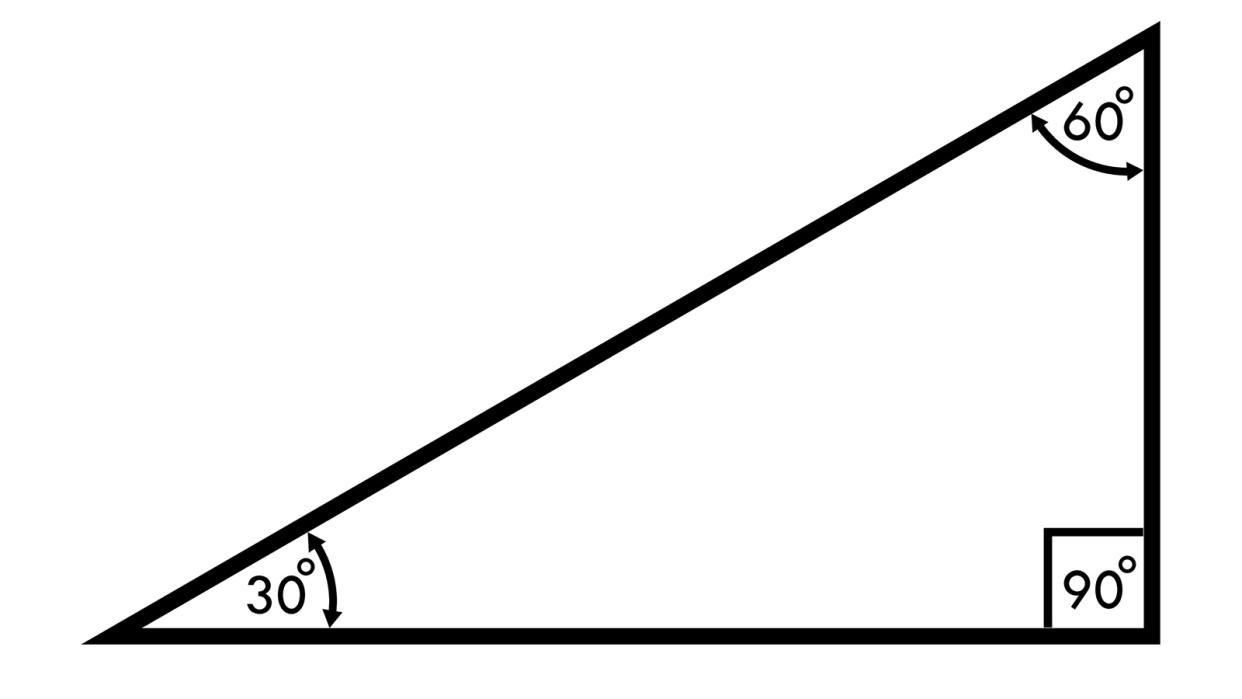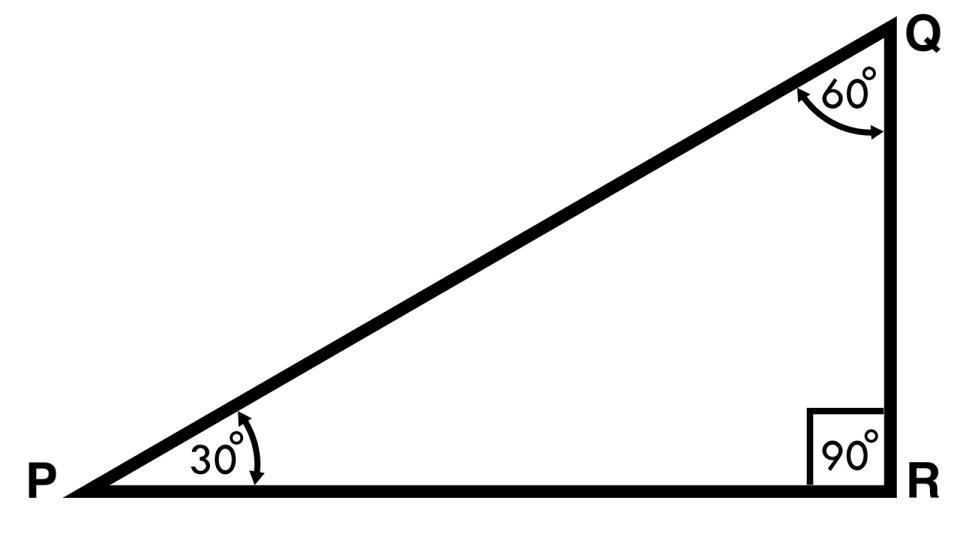30-60-90 Triangle: 4 Facts to Remember for Your Next Test

Anyone who's ever faced mind-numbing trigonometry problems and practice questions will be familiar with the Pythagorean Theorem and its square root principles in the 30-60-90 triangle. This special triangle has several short-cut rules to help new mathematicians find interior angles and linear lengths quickly.
All triangles have interior angle sums equal to 180 degrees, but special triangles (like right triangles and equilateral triangles) are the easiest to solve in geometry practice problems and other homework assignments because there is a consistent relationship between angles with the same ratio each time.
Let's look at the hypothetical triangle PQR to illustrate some of the key characteristics of a 30-60-90 triangle.

1. A 30-60-90 Triangle Is Always a Right Triangle
PQR is a special right triangle. All the sides and angles of this right-angled triangle (90 degrees) are uneven, unlike an equilateral triangle with equal angles or an isosceles triangle with two even legs.
However, by bisecting an isosceles triangle at the angle where the two identical sides meet, you can create two identical right triangles.
2. The Hypotenuse Is Twice the Length of the Smallest Side
If the problem provides one of two side lengths (the longest side, aka the hypotenuse, or the shortest side) you can easily find the other side length.
If problem states the length of the hypotenuse, you can divide that value by 2 to find the length of the shortest leg. If the problem provides the short leg dimension, you can multiply that measurement by 2 to find the hypotenuse.
3. The Smallest Angle Is 30 Degrees
The smallest angle of a 30-60-90 triangle is always 30 degrees and is adjacent to the longest side (hypotenuse). The other long leg leading from 30 degrees to the right angle equals the √3 times the length of the shortest side.
4. The Midsized Angle Is Always 60 Degrees
Remember that the middle-length leg is always opposite the 60-degree angle. Therefore, once you identify the medium-length angle, you can quickly pinpoint the remaining angle equal to 30 degrees.
Now That's Practical
Triangles are common in engineering roofs, bridges and other projects where structural strength and load-bearing of heavy stresses are essential. This is due to the triangle's ability to distribute weight better than any other shape while adding an aesthetically pleasing symmetry element.
Original article: 30-60-90 Triangle: 4 Facts to Remember for Your Next Test
Copyright © 2024 HowStuffWorks, a division of InfoSpace Holdings, LLC, a System1 Company


